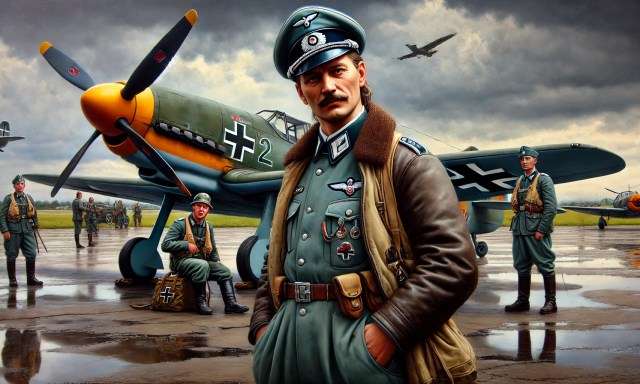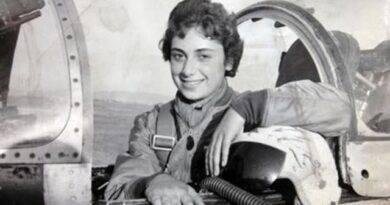Adolf Galland: The German Fighter Ace of World War II
Adolf Galland was one of the most prominent German fighter pilots of World War II. As a skilled and daring ace, Galland flew numerous combat missions, becoming a symbol of the Luftwaffe’s air superiority during the early years of the conflict. His career, marked by both personal bravery and controversy, provides insight into the operations of Nazi Germany’s air force during the war.
Early Life and Military Beginnings
Adolf Galland developed an interest in aviation from a young age after being born on March 19, 1912, in Westerholt, Germany. He began his military career with the Reichswehr, the precursor to the Luftwaffe, in 1932. Before World War II, he gained valuable combat experience during the Spanish Civil War, flying with the German Condor Legion. This early exposure to modern aerial combat helped shape Galland’s skills as a fighter pilot. In addition, it prepared him for the larger battles that lay ahead.
Rise to Fame in World War II
When World War II erupted in September 1939, Galland quickly rose through the ranks of the Luftwaffe. He flew in the Battle of France and the Battle of Britain, two critical early campaigns in the war. His aggressive flying style and leadership ability earned him the admiration of his peers and superiors. By the end of 1940, Galland had claimed over 58 aerial victories, making him one of the top-scoring German aces.
Galland’s fame grew rapidly during the Battle of Britain. He inspired other pilots with his tactical brilliance. His unit, Jagdgeschwader 26 (JG 26), played a crucial role in challenging British air defenses during the campaign. Galland’s success in shooting down enemy aircraft earned him the Knight’s Cross of the Iron Cross with Oak Leaves, a prestigious military honor.

Commanding the Luftwaffe Fighter Forces
In 1941, Galland was promoted to General of Fighters, placing him in charge of all Luftwaffe fighter operations. In this role, he reorganized Germany’s air defenses, weakened by losses during the Battle of Britain. Galland pushed for technological advancements, including the introduction of the Messerschmitt Me 262, the world’s first operational jet fighter. He recognized that the Luftwaffe needed to adapt to the increasing strength of Allied air power.
Galland’s advocacy for the Me 262 created tensions with higher Nazi officials, including Hermann Göring, the head of the Luftwaffe. While Galland saw the jet fighter as the key to regaining air superiority, Göring and other leaders were slow to support its mass production. This conflict ultimately led to Galland’s removal from his command in 1944.
A Fighter Pilot to the End
Despite his demotion, Galland continued to fly combat missions until the war’s end. In 1945, he led a small group of elite pilots known as Jagdverband 44 (JV 44), which flew the Me 262 in defense of Germany. Although the jet fighter was technically advanced, it came too late to turn the tide of the war.
Galland was captured by Allied forces in May 1945 and was held as a prisoner of war. After his release, he pursued a successful career in aviation. Also he worked as a consultant for the Argentine Air Force and later with NATO.
Legacy and Controversy
Adolf Galland’s legacy is complex. He is remembered as one of the most talented fighter pilots of World War II, credited with 104 confirmed aerial victories. However, his association with the Nazi regime and his role in defending its operations also casts a shadow over his career. Galland, like many other military leaders of the time, operated within the framework of Nazi Germany’s war machine, a point that historians continue to scrutinize.
Conclusion
Adolf Galland remains one of the most well-known fighter aces of World War II. His tactical genius, leadership, and commitment to improving Luftwaffe air capabilities made him a key figure in Germany’s air war strategy. While his personal achievements in aerial combat are remarkable, the moral complexities of his involvement with the Nazi regime cannot be overlooked. His career serves as both a testament to the skill of fighter pilots during World War II and a reminder of the ethical dilemmas faced by those who served under oppressive regimes.


